Supermatch at Vairano Ring - Ferrari 458 Speciale Review
The Ferrari 458 Speciale is a really special car, even for a manufacturer that only makes exceedingly quick super sports car. We are at the Vairano Ring to tackle some quick laps in this Ferrari. Here's how it went.
Can the electronics allow an amateur to approach the lap times of a professional? The location is our racetrack. The protagonist is this extraordinary model from Ferrari.
When we met him in Fiorano last autumn, Roberto Fideli, technical expert from Ferrari, without hiding his paternal pride, stressed this point: “The Ferrari Speciale is much more than a 458 carrying a tri-coloured stripe. Drive it and you’ll understand the amount of progress we’ve achieved.”
We drove it – not that much – but we couldn’t avoid agreeing with this engineer who has a passion for electric guitars. The Ferrari Speciale is special in everything, leading to an excellent level of performance that seemed unmatchable: we could even go so far as to say that it has very little in common with the coupe’ it comes from – since the engine, the aerodynamics, various components (the rear window, for instance, is made of plastic in order to reduce weight) and all the electronic systems that oversee the driving dynamics have been totally revised – in effect creating a completely original model. But there was something else that we wanted to test. You see, when we visited Fiorano, the whole team of engineers inundated us with a huge quantity of data, figures, and diagrams to support the fact that their actions had transformed the vehicle into one that’s not only faster in the hands of an expert, but an amateur as well. And, since at Quattroruote we’re extremely meticulous and fussy, we resolved to verify (chronometer in hand) if these technical innovations really do reduce the performance gap between professionals and amateurs.
The rules of engagement
No sooner said than done. The racetrack is Vairano, our second home. The professional too, Davide Fugazza, is a man without a rival at this track on which he owns the lap record (aboard a Lamborghini Gallardo Squadra Corse). The amateur is I. The last time I undertook such a test in a 430 it was at Fiorano, the home of Ferrari, six years ago.
The contest is easy – go as fast as possible and avoid crashing the 458 anywhere on the racetrack (actually, this recommendation was only addressed to me due to the expertise of Mr. Fugazza). Therefore, I pulled out my dusty helmet (which only gets sporadic use), recollected some of my past efforts to gain sporting glory while driving some vintage cars, and showed up to the racetrack to put myself through the judgment of the Ferrari team of mechanics and testers, of our test team, and, eventually, the photographers.
The first to hit the track is ‘Big Feet’ Fugazza, whose lean frame (of only 72kgs) already has me ready to use his weight deficit as an excuse for my lap time deficit in case I need to. The Michelin Pilot Sport Cup 2’s (which have been specially designed to be used on the Speciale) are being readied for the cold and damp conditions. The track is a still a little dirty (a truck had some problems a few days ago), but otherwise the conditions are perfect for a record run – luckily our top driver is fearless.

Too ‘controlled’ in Race
The litmus test in this case, though, is with the journalist strapped in. Secured tightly by a four-point harness (standard equipment in the Speciale), I feel very comfortable in this car – as I do in the 458 Italia (and in all Ferrari’s for that matter). The driver has a feeling of being an integral part of the car. On the first test lap, I immediately note that the engine, which was excellent before, is now extraordinary. It’s a little more grumpy because of the additional horsepower, but it pulls to 9,000rpm without any hesitation and reacts immediately to any input of the accelerator – which means that it hits the limiter even faster thanks to the shorter gear ratios. The seven-speed dual-clutch automatic gearbox (which also has an automatic mode) continues to be outstanding. The changes, both up and down, occur in a nanosecond – providing a flowing, continuous rhythm even at insane speeds. With the manettino in race mode, the electronic brain remains ever vigilant for any lack of grip. As a result, it cuts in a little too often on a tight and twisty tack like Vairano. So, I have to settle for quite a slow time of 1:16.22. Better to try it with CT off then – which, according to Ferrari, is the ideal setting because of one reason: The Speciale is the first Ferrari to integrate an admirable device called SSC to the E-Diff and the F1-Trac traction control. The result on the racetrack is that whenever the engine control unit senses oversteer, it adjusts the differential accordingly while the F1-Trac regulates the throttle – all of which leads to almost perfect drifts ‘automatically’ that are controlled with just a touch of opposite lock.
The importance of relying on top-class ‘footwear’
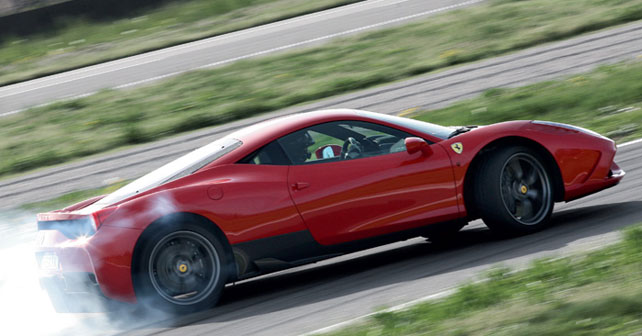
Michelin designed these tyres specifically for the ‘Speciale.’ With a 6% increase in grip, the Pilot Sport Cup 2’s have a compound that improves the performance over a single lap in the dry, not to mention consistency over a series of laps, as well as wet grip. The new 20-inch rims are 12kgs lighter than the ones used on the 458 Italia
Behind the scenes
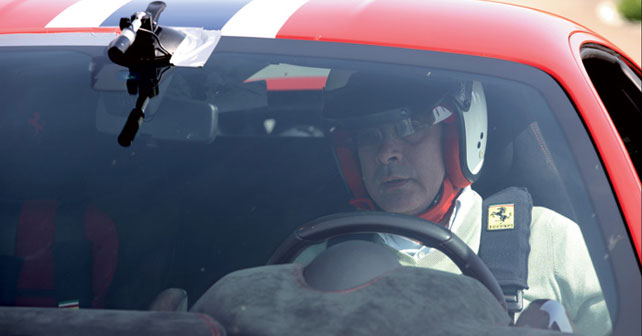
As always in these challenges, the test involved several people. Besides the two test-drivers (the real one, and the improvised one), the whole Quattroruote test centre was present, as well as a team of 4 from Ferrari, including test-driver Michele Cuoghi Costantini. Several sets of tyres were available, but eventually only two of them were used.
When we faced Schumi
FORZA MICHAEL! THE NEXT TEST WILL BE WITH YOU
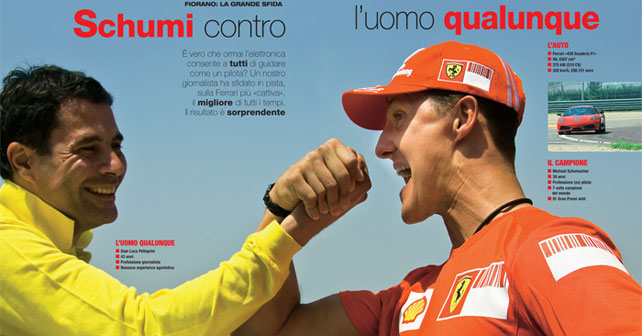
The idea underlying this test, we must admit, is not original at all. During the summer of 2008, our journalist disembarked to Fiorano carrying few tools and his helmet to challenge Michael Schumacher, at that time the number one driver for Ferrari. The Prancing Horse in that challenge was the Scuderia, which was to the 430 what the Speciale is to the 458. The result was unexpected – our reporter lapped Fiorano just three seconds slower than the multiple world champion, with the manettino set to ‘Race.’ Today, Michael is battling a far more arduous and difficult challenge. And we’d like to think that the next such Quattroruote challenge will again see him on the start line, as fast and professional as ever. We wish him a speedy recovery. The world is waiting for you, Schumi.
The heart of the red Ferrari
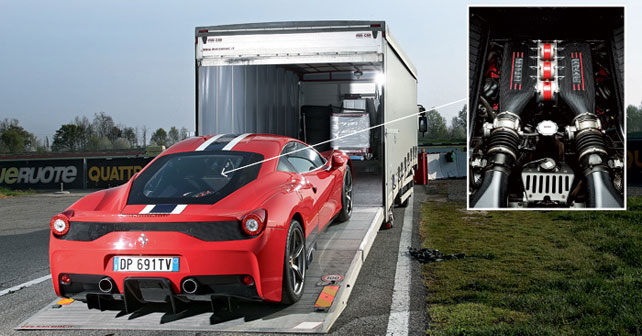
The 4.5 litre V8 of the 458 has been almost totally revised to get a compression ratio of 14:1. The result is a 27bhp increase in power and an 8kg weight reduction
Little space for comfort
Anatomical seats, four-point harness, no padding at all: the Speciale offers no concessions for comfort
Set to Race 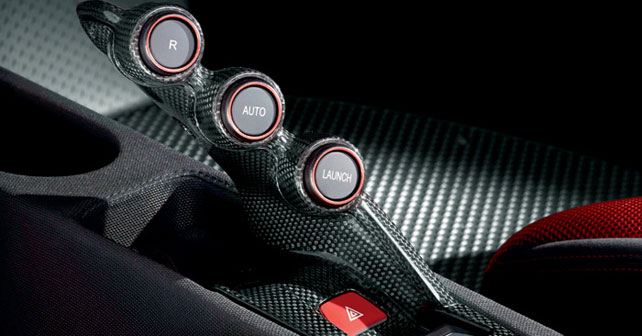
The cockpit and drivers’ seat reflect the main goal of the Speciale: going fast. The steering wheel holds various controls, including flashing gear change lights
The Facts
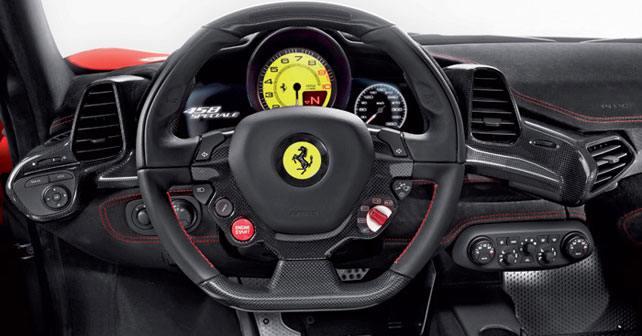
458 Speciale
Engine: Petrol V8 4,497cc
Power: 597bhp
Competitors: Lamborghini Gallardo LP 570, McLaren MP4
On the racetrack
THE CAR FLATTERS THE DRIVER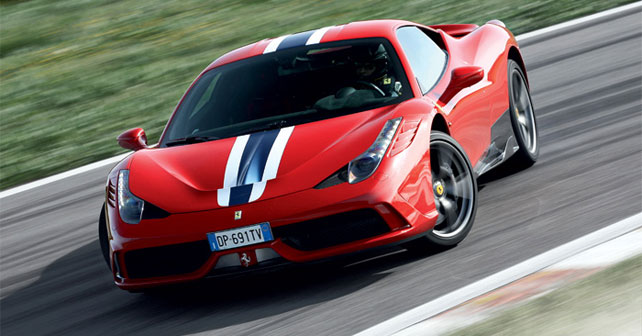
The main difference in the drivers lies in the braking zones. For the rest, the electronics ‘almost’ transforms the amateur into a professional
Our racetrack is not that long, but it’s certainly not easy to cover. We designed it that way on purpose – to reveal the dynamic qualities of the machine being tested. A total of 2.56 kilometres of sharp, as well as flowing, curves, chicanes with sudden direction changes, reverse gradients, and fast turns that don’t allow braking in a straight line on the approach. In the following page, you’ll find the times achieved by both the reporter and the professional using three different configurations (Race, CT off and ESC off). The reporter got the best performance with CT off (traction control disabled, but ESP active). The professional, on the other hand, got a slightly better time by keeping the Electronic Stability Control system at bay as well. The analysis of the facing page is based on the lap executed with CT off. Once across the start-finish line (1), the reporter starts braking hard from 183.3km/h against 187.4km/h for the professional. Sharp braking, a second gear chicane, and onwards towards the North curve slotting in sequence third, fourth, and fifth gears – to face one of the most difficult sections of the whole circuit. The reporter reaches a speed of 182.8km/h and he slows down 70 meters before the professional, who also manages to be 10km/h faster. They both leave the North turn with a bit of oversteer. We then come to the fastest point of the track (4), where the two drivers proceed at almost the same speed (230km/h). Three sharp turns follow in a very difficult sequence – their decreasing radius demanding the most from the car and the drivers. At the end of the fastest stretch of the racetrack (A-B), the professional is already ahead of the reporter by four-tenths. This leads to a tough chicane, and the slowest part of the track. Massive sensitivity is required here, not least because the corner (10) leading to the start-finish line is off camber. Once the professional reaches this point (C), he’s already stolen almost another second over the journalist…
Driving the speciale is an unforgettable experience
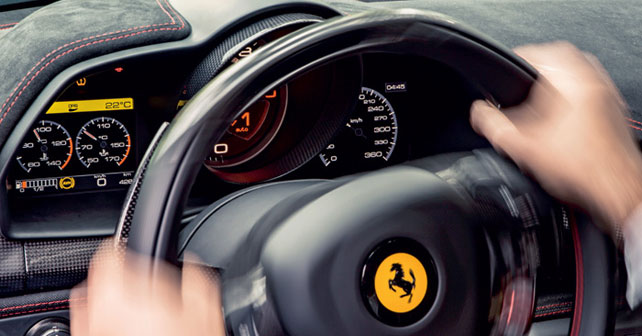
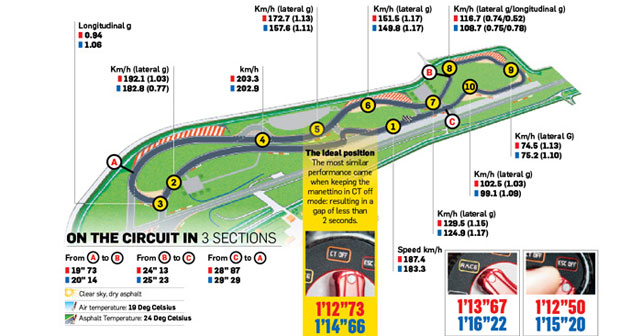
The Special details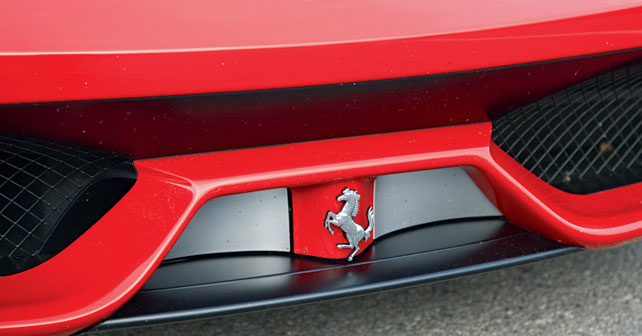
In this Ferrari, the contribution of the software is critical to the driving experience. Looks can be deceiving – the 458 is as comparable to the Speciale as the BMW M3 is to the 3 Series.
The electronics can calculate, in real time, the vehicle position in a slide and compare it with its ideal values. Making its first appearance, the Side Slip Control (SSC) leads to an optimization of the engines torque supply through the E-Diff in an effort to provide more incisive control at the limit. Keeping the manettino dial in Race and CT off, it’s now possible to breach the limits of adhesion with impunity. Agility and stability, which were previously in conflict, are both harnessed by SSC. When the system senses that the car is not at the limit, i.e. it’s stable, it frees up the E-Diff for more agility. The opposite happens when it senses that you’re approaching the limit. As long as the driver continues to steer, or counter steer, the electronics will allow a bit of slip. It only reigns in the torque from the engine as and when absolutely required.
Well, my goal is to reach Fugazza’s time of 1:12.72. And from the very first few corners, I understand just how right the people at Ferrari were. I clip the apex of the first right-hander, and continue on sideways before inserting fifth. By the time I reach 200km/h I need to tap the brakes to put some weight on the front axle before the S curve. Slot it in fourth for the next right-left, keep the speed up, and then slot it in third – giving me oversteer on the way out. I put it in fourth once again to make full use of the abundant horsepower and make sure not to work the steering wheel too much. Give it the beans once more, and then exploit the full limits of the excellent carbon ceramic braking system deep into the narrow chicane. I go from fifth to second in rapid succession and then enjoy some more oversteer before crossing the finish line. The official time is 1:14.655. On the second lap. Less than two seconds from our top test driver, who lives between the kerbs and weighs 18kgs less than me. Who also wore out the tyres by getting onto the track before me (just to give myself an additional excuse). Jokes apart though, the result is excellent. It’s impossible to find another GT car that is this ‘naturally’ fast. The Gallardo, which still holds the record at Vairano, is virtually a race car with limits so high that they’re unapproachable by anyone other than a professional. The Ferrari’s limits are at the fingertips of anyone with a modicum of experience – thanks to the symphony between the electronics and the mechanics of the car. What’s more, if you’re humble enough to learn from the virtual teacher made up of microprocessors and sensors, then you can learn to extract the most from the 458 – even without the traction control turned on. After two laps with the electronic systems turned off, I managed a time of 1:15.20 (which is on par with the best time achieved by the 458 Italia).
TECHNICAL FEATURES
Engine type: longitudinally mid-mounted. Petrol V8 - 90° - Bore 94mm - Stroke 81mm - Overall displacement 4,497cc
Maximum power 597bhp @ 9,000rpm - Maximum torque 540Nm @ 6,000rpm - Light alloy cylinder block and heads - 2 camshafts and 4 valves per cylinder - Direct ignition, compression ratio of 14:1.
Drive: Rear-wheel drive – 7 speed F1 dual-clutch transmission – Third generation electronic differential
Tyres: Front 245/35ZR20, rear 305/30ZR20 - Puncture repair Kit.
Body and main parts: coupé, 2 doors, 2 seats - Front and rear independent suspension, Magnetorheological suspension with electronic control - Carbon ceramic auto-cooling braking system, front 398mm, rear 360mm - High performance antilock braking system/electronic brake force distribution - Side slip angle control – Steering rack, hydraulic servo-control – Fuel tank capacity 86ltrs.
Weight: Dry weight 1,290kgs, Kerb weight 1,395kgs, full loaded weight 1,700kgs Produced in Maranello (MO)
Coefficients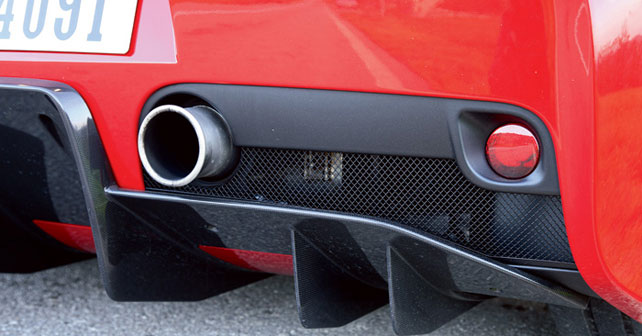
The 458 Speciale’s extraordinary aerodynamic efficiency is the highest in Ferrari’s production car history – it’s the fruit of a string of innovative and original advances that have yielded an excellent downforce (Cl) value of 0.53 while still keeping the drag coefficient (Cd) very low at 0.35.

1. A redesigned diffuser benefits from different tailpipes and movable flaps to improve downforce by 3%
2. Spoiler lifted up and set further back by 35mm increases downforce by 7%
3. Homologated exhaust system with a reduction of backpressure of up to 25%
4. A 5% increase in the air intake leads to increased valve lift
5. Gear shifts faster by 44% while up-shifting and 20% while down-shifting
6. Better engine cooling thanks to the additional ventilation in the hood and though the wheel-arches
7. Less pressure on the nose, thanks to two profiles. The movable vanes improve both drag and downforce
8. Side fins to increase the downforce on the front axle
9. Carbon ceramic braking system by Brembo is the same one found on the La Ferrari
10. There are advanced electronics everywhere, from the magnetic shocks, to the dual-clutch gearbox, to the Side Slip Control (SSC)
Summing up
The fact that this Ferrari would have outstanding performance was never in any doubt. After all, the normal 458 (if that adjective can be used while describing a car of this kind) continues to be the global benchmark for sports cars. So, it’s not the cold hard numbers that surprised us (although they were very impressive), but the way in which they were achieved. The Speciale is built and designed to amplify the driving technique of the person behind the wheel – exalting it beyond merit, and massaging the ego of the amateur. If offers a completely unique experience in the world of super-sports cars. The only thing left to wonder is what the La Ferrari will be like…
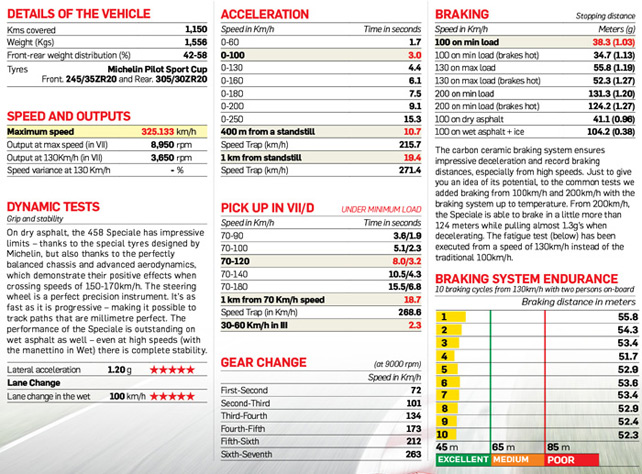

© Riproduzione riservata

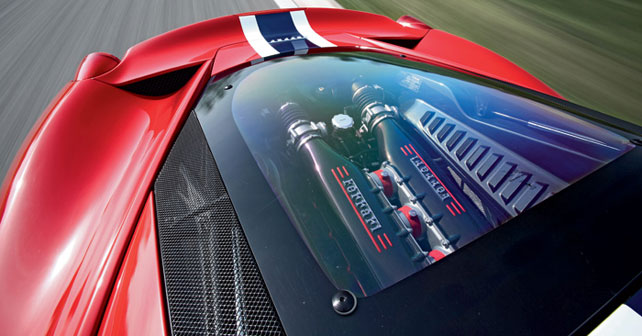
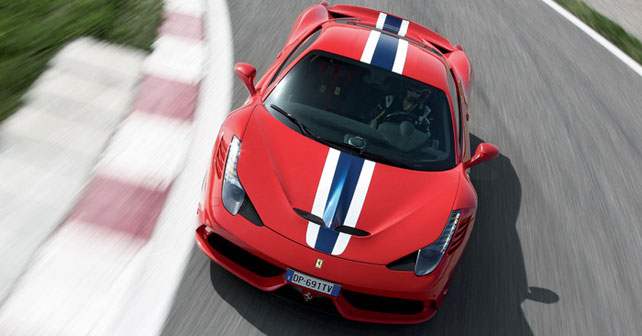
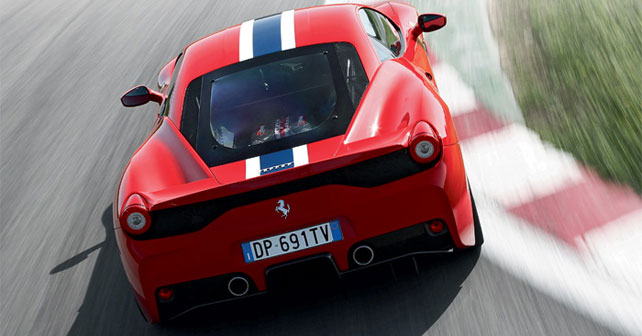
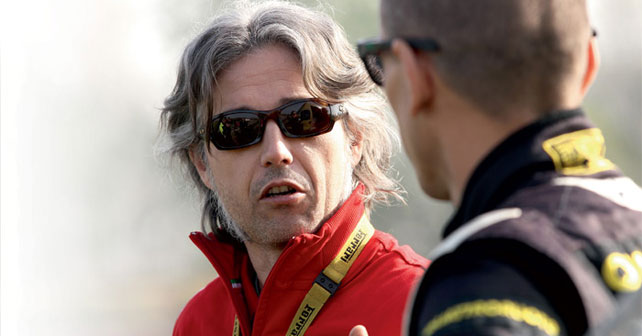
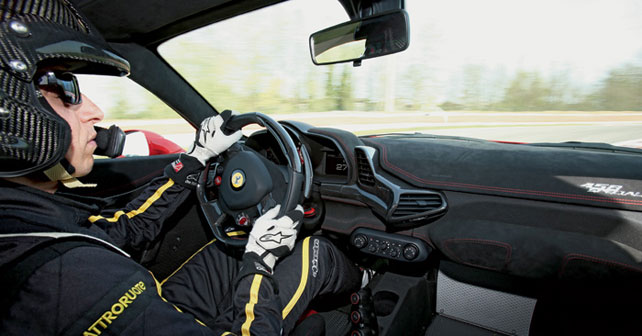
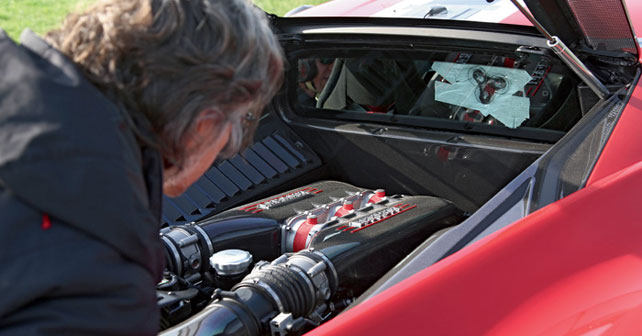
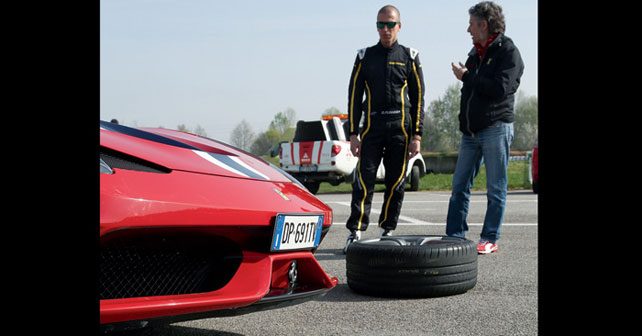
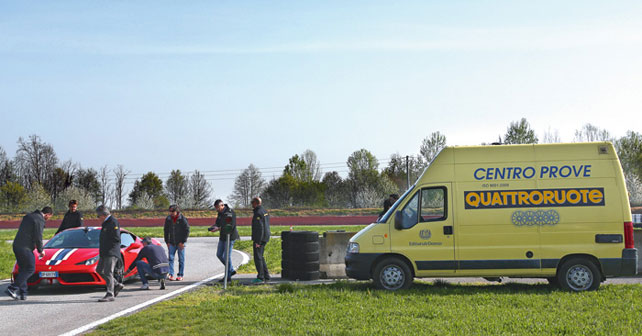

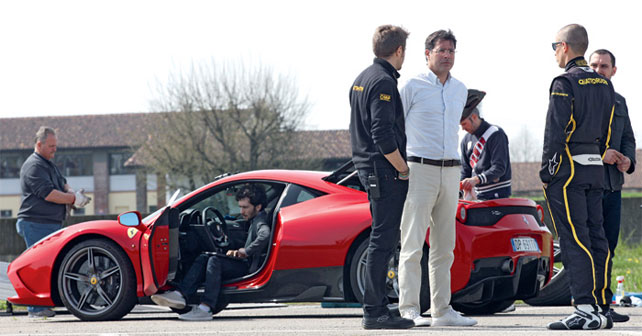
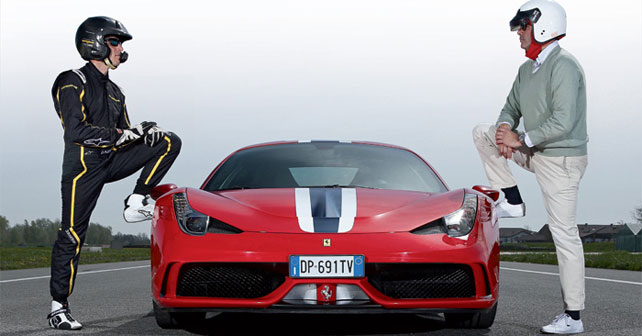

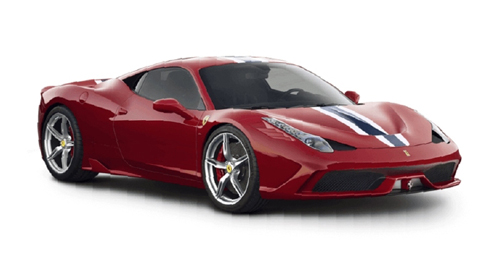
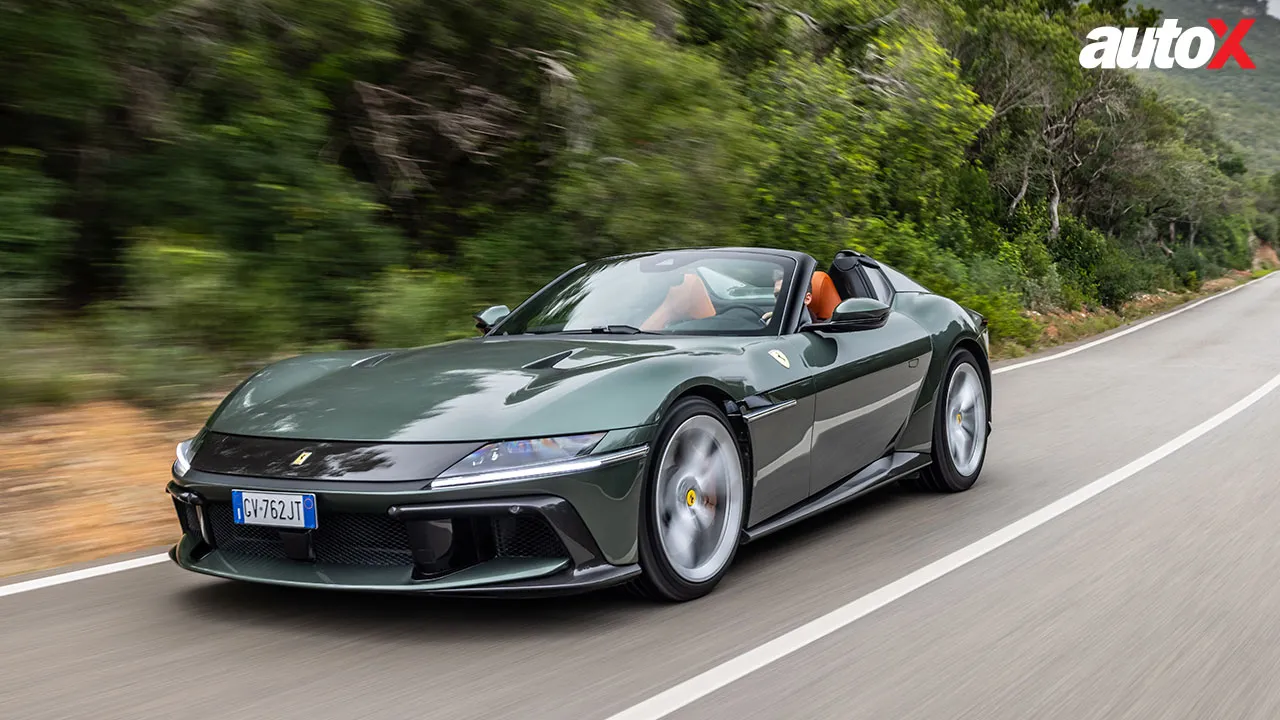
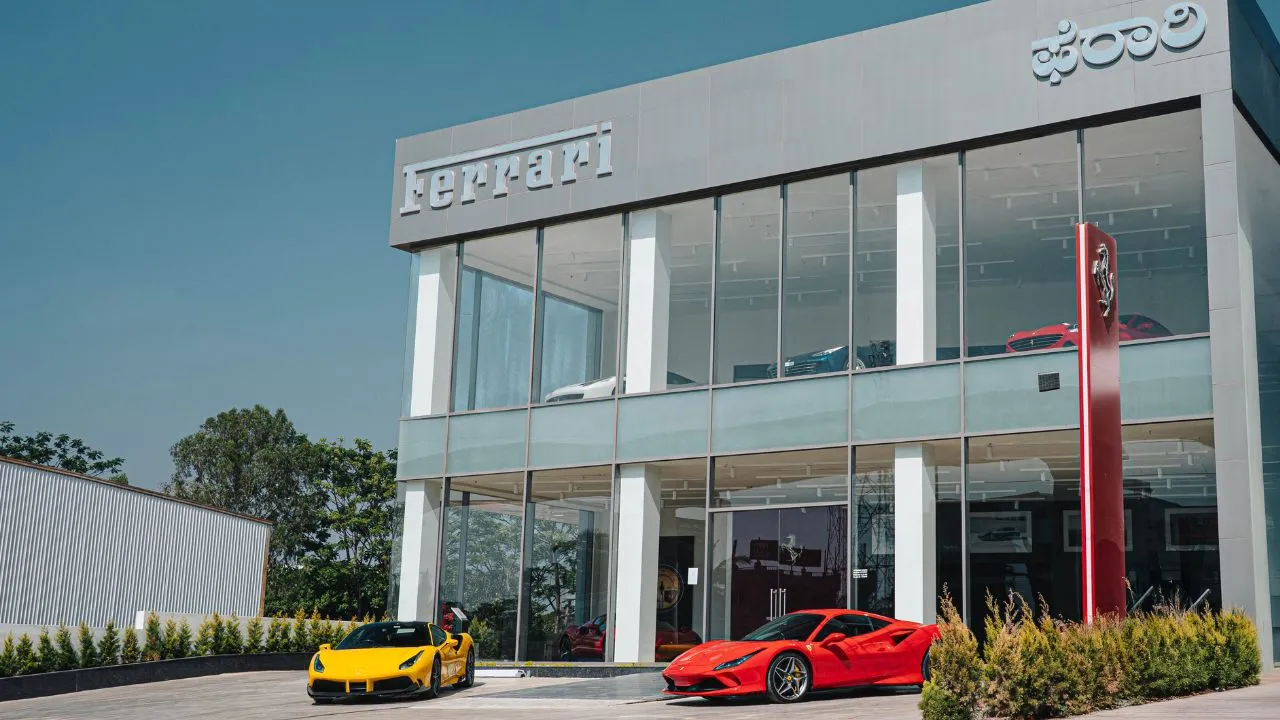


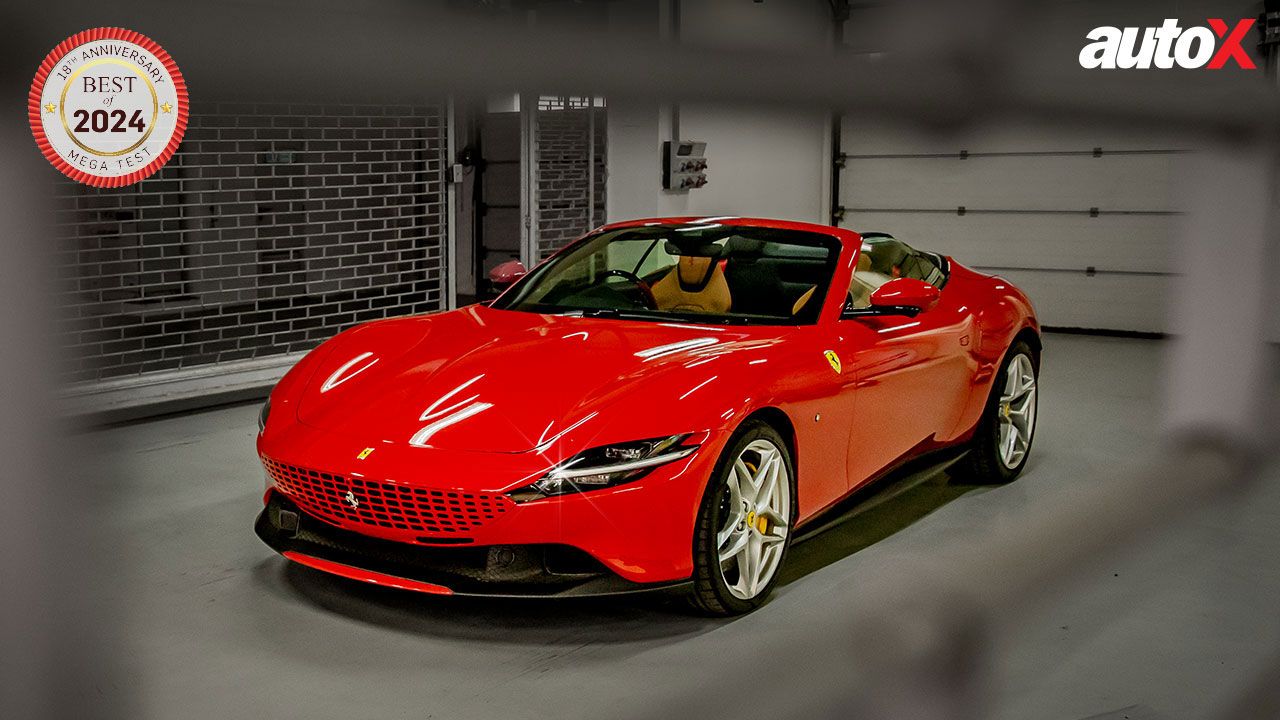

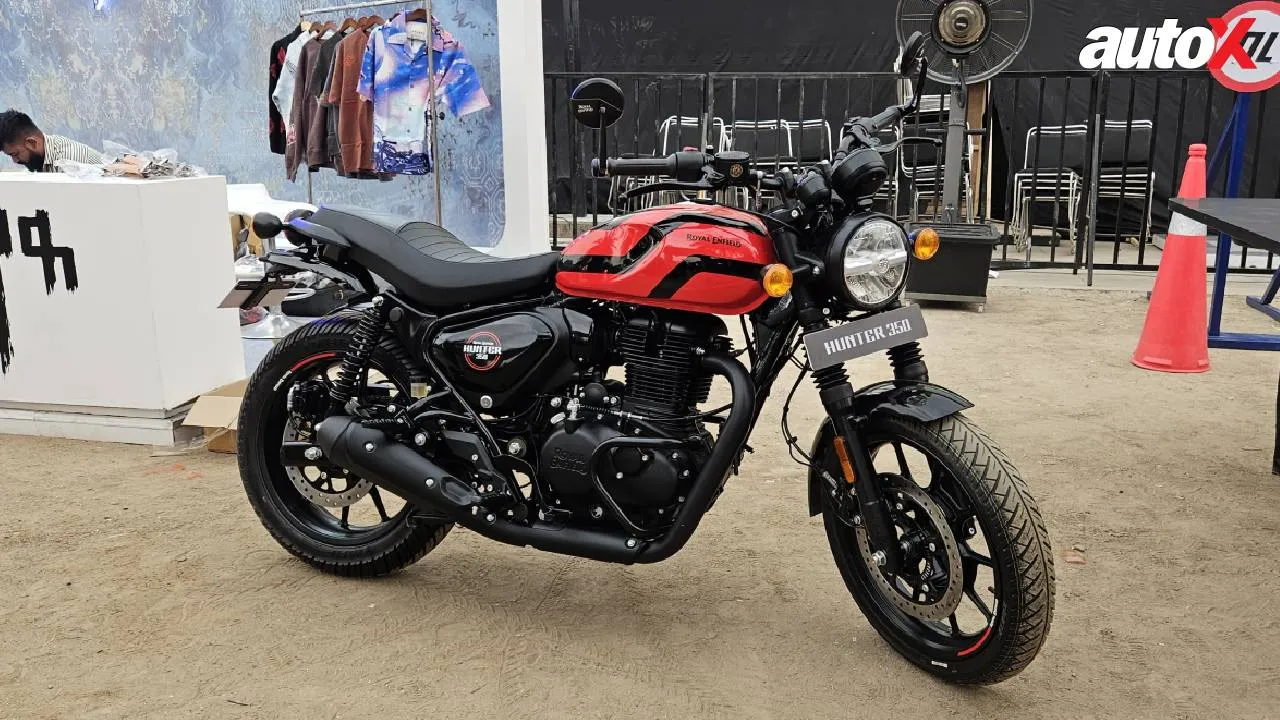
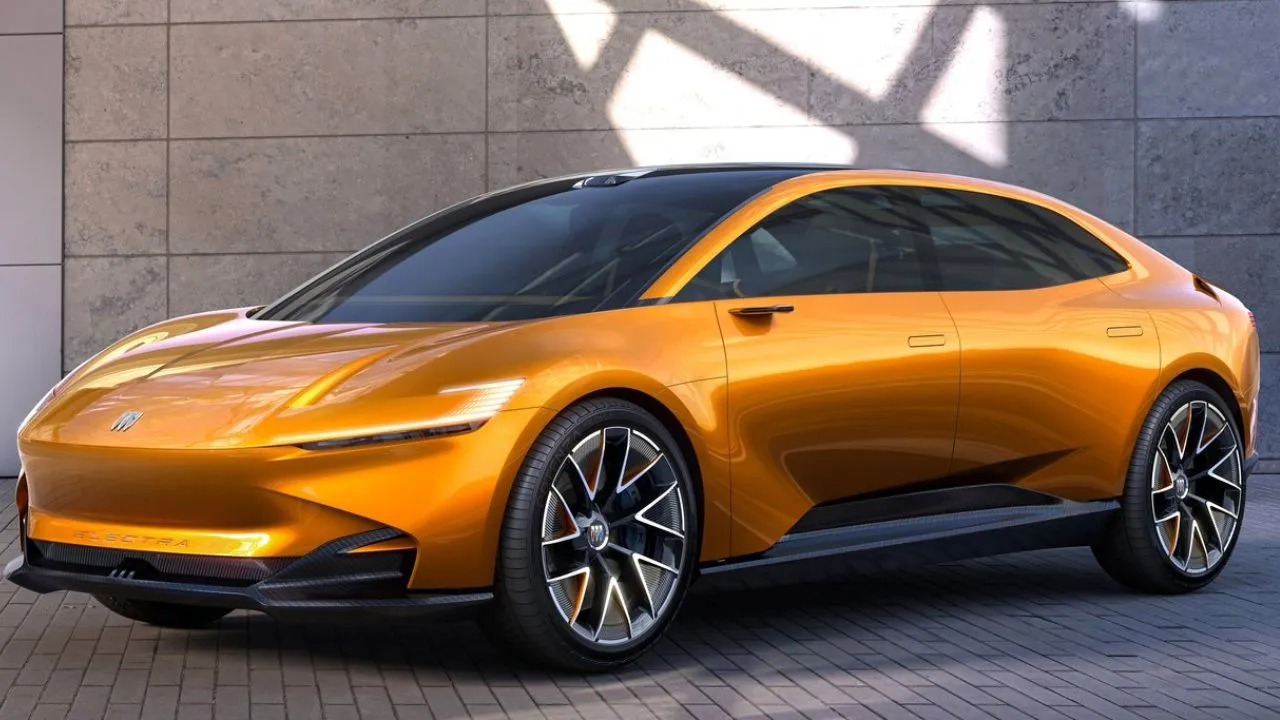

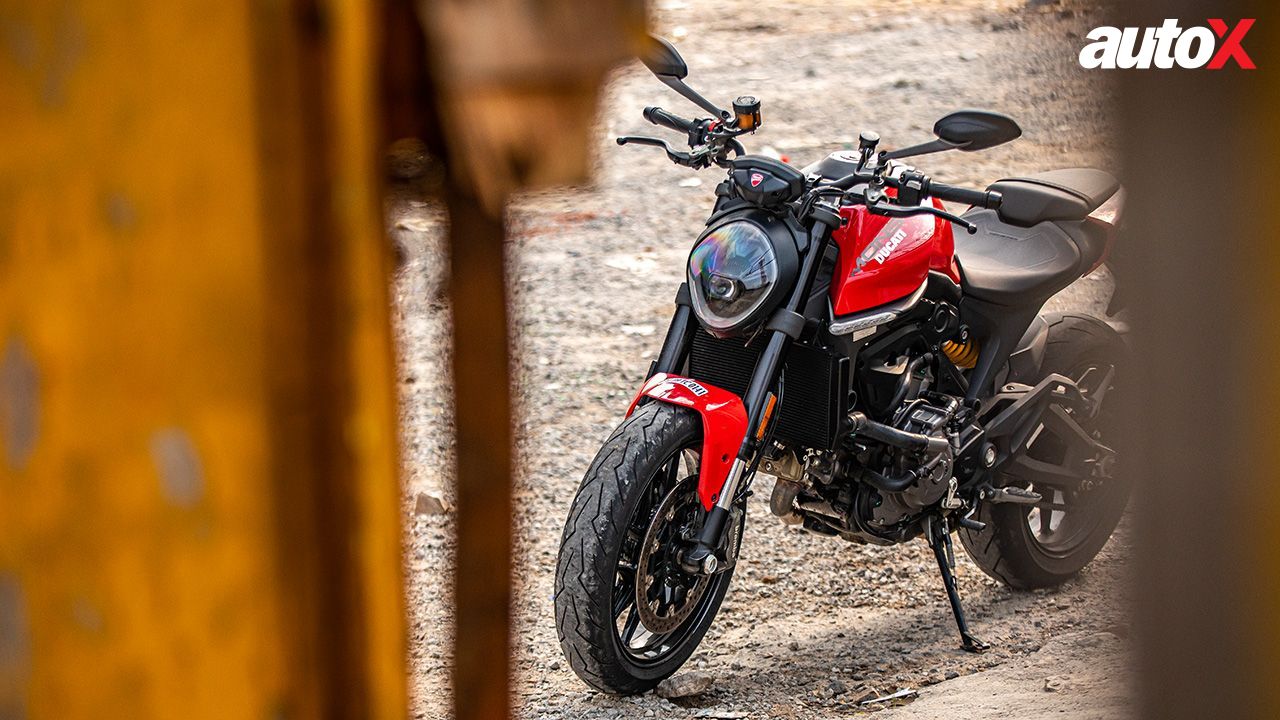
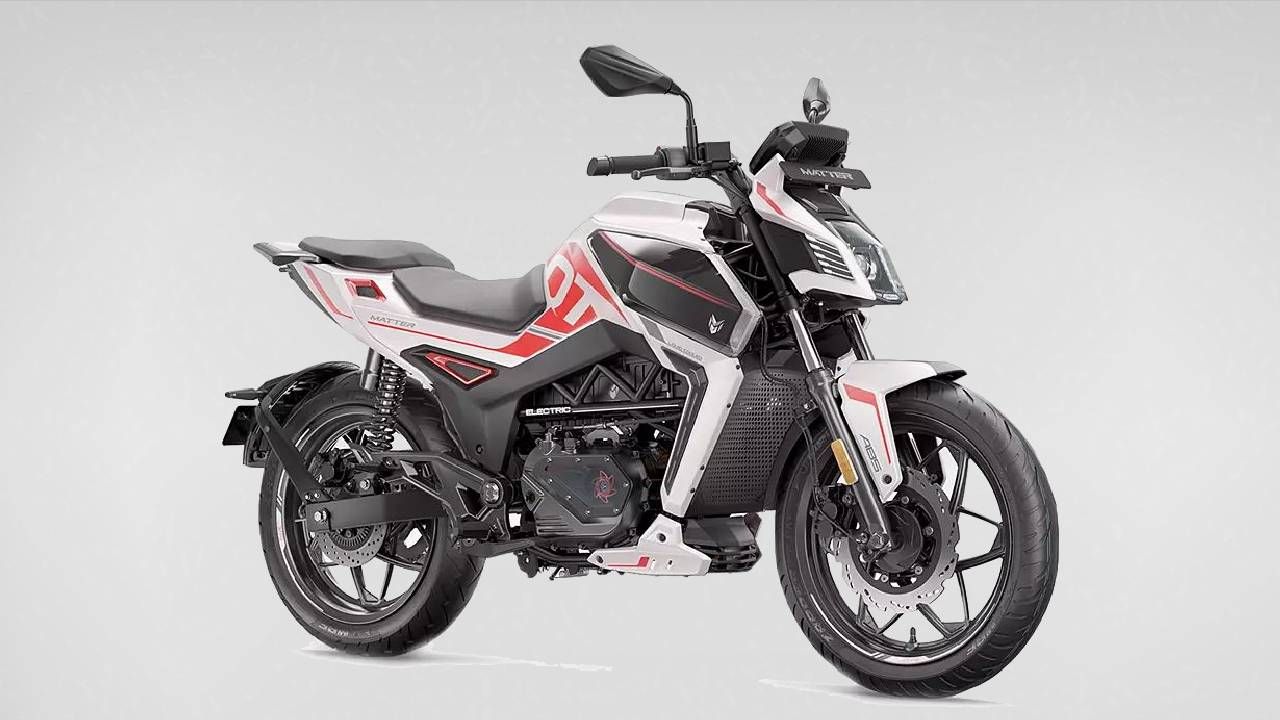














Write your Comment on